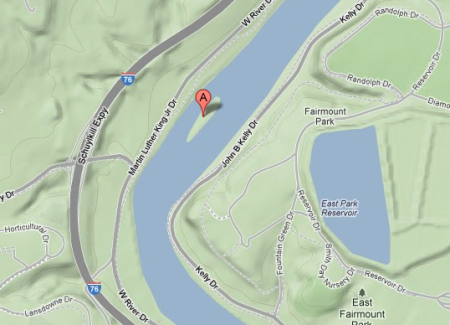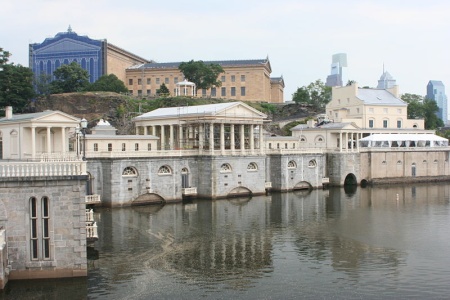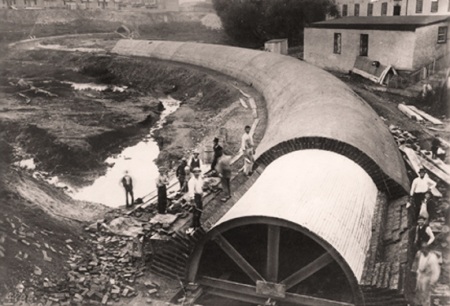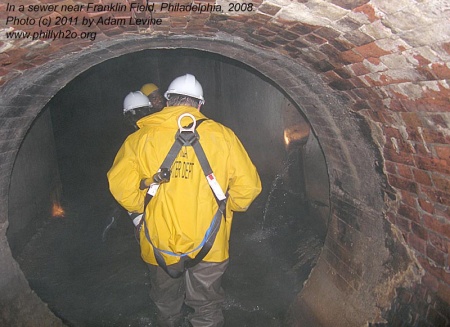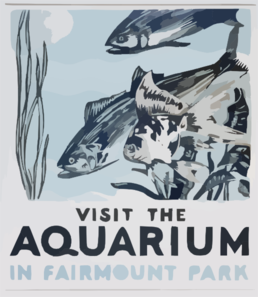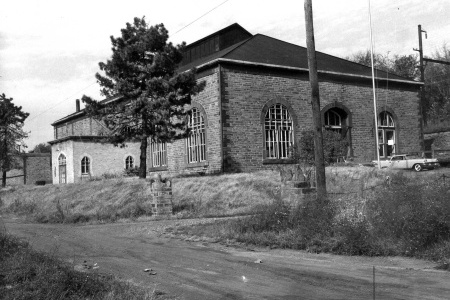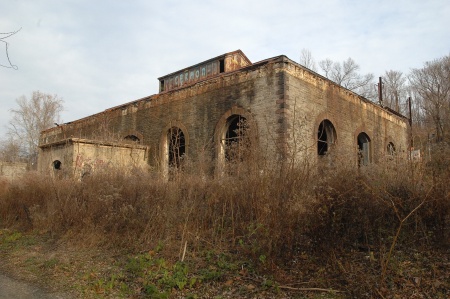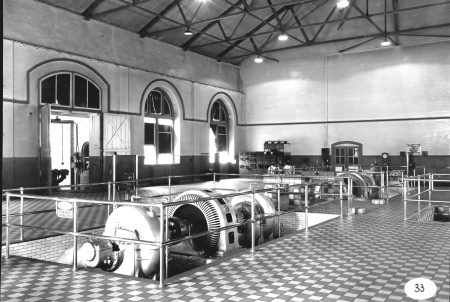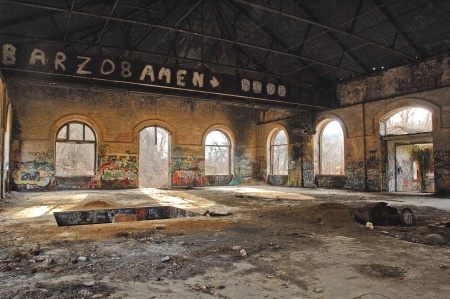PWD Catalogue No. 1986.002.2546

This group of workmen filling a crack in the Torresdale Conduit. They are using slurry of concrete, sometimes called grout, which is being pumped into a crack from the metal basin in the foreground through the nozzle held by the man in the background.
The Torresdale Conduit was built along the Delaware River front in the first decade of the 20th century. It carries filtered water from the Torresdale Filters (now the Baxter Water Treatment Plant) to the Lardner’s Point Pumping Station, which pumps the water into the city’s system of distribution pipes. When they were completed, both the filter plant (covering about 75 acres) and the pumping station (with a capacity of 200 million gallons a day) were each the largest of its kind in the world.
The conduit is about 2.5 miles long and about 10.5 feet in diameter. Constructed of bricks and mortar, it lies about 100 feet underground, and was built completely “in tunnel”, like an underground mining operation, rather than in an open excavation from the surface. To do this, eleven shafts were built along the length of the conduit, connecting the surface with the work area underground. As the construction progressed, excavated material was raised up and removed through these shafts, and construction material was lowered down.
Fourteen people died in the construction of this pipeline, which is still in use and an integral part of the City’s water distribution system.
For more information on the history of the city’s water filtration system, click here.


